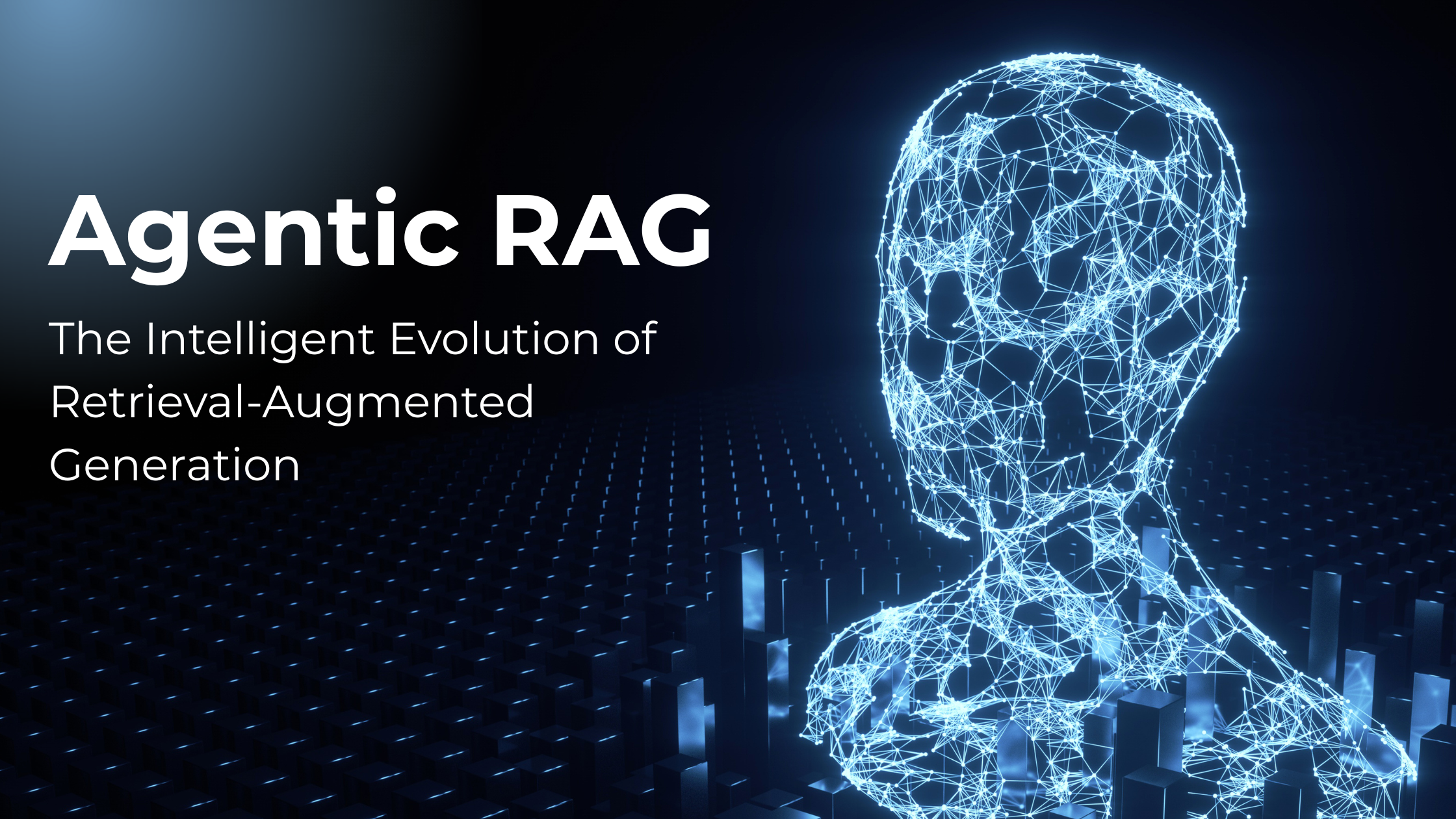Agentic RAG: From Response Engines to Autonomous Intelligence
The next phase in AI evolution: smarter, scalable, and self-directed.

The world of large language models has witnessed a remarkable evolution, with Retrieval-Augmented Generation emerging as a transformative technology. RAG systems marry the capabilities of LLMs with external knowledge retrieval, creating responses that demonstrate precision, factual grounding, and contextual relevance. However, conventional RAG architectures face growing constraints when confronted with intricate workflows, diverse data modalities, or processes demanding sequential logical reasoning.
Enter the revolutionary concept of Agentic RAG.
This advanced approach elevates traditional RAG methodologies by incorporating autonomous agents, software components that are independent, purpose-driven, and excel at executing targeted functions through strategic planning, logical reasoning, and sophisticated tool utilization. Through the integration of these agents within LLM-retriever frameworks, Agentic RAG revolutionizes AI from a reactive response system into a proactive intellectual assistant capable of investigation, analysis, and strategic decision-making.
New to Agentic AI? Check out our Beginner’s Guide to Agentic AI to build a strong foundation before diving deeper into Agentic RAG.
What Is Agentic RAG?
Fundamentally, Agentic RAG represents an advanced AI architecture that incorporates autonomous agents throughout the Retrieval-Augmented Generation workflow. Rather than merely extracting documents and employing LLMs for text creation, agents within Agentic RAG systems:
- Deconstruct sophisticated user inquiries into manageable components
- Investigate and extract pertinent information from multiple data sources
- Leverage specialized tools, including APIs, databases, computational engines, and visualization platforms
- Collaborate with other agents for reasoning, analysis, and synthesizing information
- Produce comprehensive, structured, and objective-aligned outputs
This advancement transforms Agentic RAG from a simple response generator into an AI partner that replicates the intellectual workflows of experienced professionals and subject matter specialists.
Why Traditional RAG Falls Short?
Conventional RAG systems transformed generative AI by enabling models to access external information sources beyond their pre-trained knowledge foundations. Nevertheless, these systems face several limitations:
Simplified Structure: Traditional RAG lacks sophisticated multi-layered reasoning capabilities and cannot effectively process complex instruction hierarchies.
Inflexible Querying: Information retrieval operates through single-execution patterns without dynamic adaptation or iterative refinement processes.
Tool Integration Absence: Conventional systems cannot interface with external tools or execute computational operations.
Restricted Context Handling: Token limitations create challenges when processing extensive documents or integrating multiple information sources.
These constraints render traditional RAG inadequate for enterprise scenarios that require workflow coordination, information fusion, and adaptive decision-making capabilities, which Agentic RAG delivers through intelligent agent integration.

How Agentic RAG Works
A comprehensive Agentic RAG system operates through several interconnected elements:
User Query Ingestion Users submit natural language queries or task specifications to the system.
Task Decomposition by Planner Agent A specialized planning agent interprets the request and segments it into specific subtasks (such as data retrieval, result comparison, and insight summarization).
Specialized Agents Execute Subtasks. Individual agents manage distinct functions, including retrieval, summarization, computation, or visualization through APIs and specialized plugins.
Retriever Engine Activation. Each agent utilizes retrieval systems (such as vector databases like FAISS, Weaviate, or Pinecone) to access relevant contextual information.
LLM + Tools Agents combine language models (including Claude, GPT-4, or Mistral) with specialized tools (such as Python environments, SQL interfaces, Excel applications) to accomplish their designated functions.
The Synthesizer Agent consolidates all results and generates comprehensive final responses, complete with explanations, visualizations, or source citations.
Key Features of Agentic RAG
1. Multi-Agent Collaboration
Numerous intelligent agents coordinate their efforts, each specializing in distinct areas: document retrieval, analytical processing, or result visualization.
2. Dynamic Planning and Reasoning
Agents possess the capability to modify their strategies based on newly acquired information, enabling them to respond immediately to evolving situations, such as market fluctuations or medical emergencies.
3. Tool Usage
Agents can utilize various tools, including calculators, external APIs, code execution environments, and spreadsheet applications, to handle non-textual tasks.
4. Long Context Handling
Agentic RAG uses specialized agents to break down complex tasks, handling long contexts with greater precision, like a team of focused assistants ensuring nothing is missed.
Benefits of Agentic RAG for Enterprises
Enhanced Accuracy and Depth Through task segmentation and multi-source information gathering, Agentic RAG reduces fabricated responses and improves factual precision.
Business Workflow Automation. From document creation to regulatory analysis, Agentic RAG automates complete processes, eliminating hours of manual labor.
Scalable Intelligence Agentic RAG systems scale flexibly like an innovative team, growing during peaks and shrinking when idle, offering cost-effective performance for businesses.
Domain Adaptability Across Sectors, including Healthcare, Legal Services, Finance, or Customer Relations, Agentic RAG Adapts to Industry-Specific Requirements.
Transparency and Explainability Every process step maintains traceability, facilitating auditing, validation, and explanation of AI decision-making in regulated sectors.
Real-World Applications
Healthcare Agentic RAG systems interpret medical records, explore research databases, and suggest treatment protocols while providing source documentation for clinical evaluation.
Financial Services Agents examine financial reports, market patterns, and client information to create investment guidance or risk evaluations.
Customer Support AI agents access product documentation, search support databases, and manage ticket creation, transforming LLMs into continuous virtual assistants.
Education and Research - From assessment grading to academic paper analysis, Agentic RAG enhances educational processes and research productivity.
Manufacturing and engineering agents review equipment documentation, maintenance records, and live sensor information to detect problems and suggest solutions.
How to Build an Agentic RAG System
Follow this strategic implementation approach:
Choose the Right LLM: Begin with enterprise-quality models such as Claude Opus, GPT-4, or open-source options like Mistral 7B or Llama 3.
Integrate a Vector Database: Implement Pinecone, ChromaDB, or Weaviate for document embedding storage and retrieval.
Design Modular Agents: Create function-specific agents: Retriever, Analyzer, Calculator, Summarizer, Synthesizer, and others.
Utilize a Task Orchestrator: Leverage platforms like LangGraph, CrewAI, or AutoGen to seamlessly coordinate AI agents, facilitating smooth, efficient teamwork and streamlined management of complex workflows.
Toolchain Integration: Incorporate tools for code execution (Python REPL), databases (PostgreSQL), visualization (Plotly), or external API access.
Monitor and optimize agent effectiveness, expenses, and accuracy, while implementing feedback mechanisms to improve output.
To explore a practical implementation, check out

Challenges & Considerations
Latency: Multiple agents and tools may extend processing duration. Utilize caching and smart pre-loading to minimize delays and enhance efficiency.
Security: Confidential information requires role-based permissions, encryption protocols, and agent isolation measures to ensure its protection.
Cost Management: Intelligent agent architectures demand additional computational resources; optimization and fine-tuning remain essential.
Governance: Transparent audit processes and interpretable outputs are fundamental for enterprise implementation.
Conclusion: Agentic RAG is the Future of LLMs
The advancement of AI encompasses more than superior models; it involves more intelligent operational frameworks. Through Agentic RAG, organizations can implement autonomous, intelligent agents that transcend basic question-answering capabilities. These systems solve complex problems, analyze information, utilize tools, and generate genuine business value.
As increasing numbers of organizations adopt LLMs in their quest for dependable, scalable, and adaptive AI solutions, Agentic RAG establishes itself as a fundamental architecture for developing AI systems that function more like human collaborators than simple chatbots.
Interested in implementing an Agentic RAG system? Let's explore strategies, tools, and architectural approaches that suit your business requirements.

FAQs
1. What makes Agentic RAG different from traditional RAG systems? Answer: Agentic RAG introduces autonomous agents capable of planning, reasoning, using tools, and collaborating across tasks, unlike traditional RAG, which only retrieves documents and generates text without deeper task orchestration or adaptability.
2. Do I need a team of developers to implement Agentic RAG in my organization?
Answer: While technical expertise is helpful, modern orchestration frameworks like LangGraph, AutoGen, and CrewAI simplify the integration of agents. Partnering with experienced AI solution providers can accelerate your implementation.
3. Can Agentic RAG be customized for industry-specific use cases?
Answer: Yes. Agentic RAG is highly adaptable and can be tailored for sectors like healthcare, finance, manufacturing, legal, education, and more by designing domain-specific agents, retrieval systems, and toolchains.
4. How does Agentic RAG ensure accuracy and reduce hallucinations? Answer: By using task-specific agents to decompose problems, fetch context from verified sources, and apply reasoning or tools where needed, Agentic RAG improves factual precision and reduces the likelihood of LLM hallucinations.
5. What are the infrastructure requirements to deploy Agentic RAG at scale?
Answer: Agentic RAG can be deployed on cloud-based infrastructure with containerized environments. You’ll need access to LLMs (e.g., GPT-4, Claude), a vector database (e.g., Pinecone), and orchestration tools. Cost-effective scaling is achievable through dynamic agent allocation.

